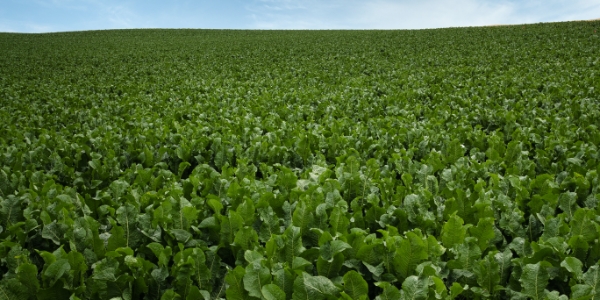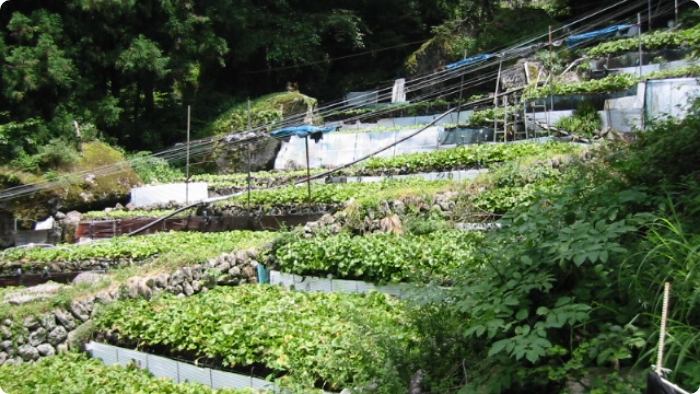
Wasabi has long been a favorite of the Japanese people. From a technical point of view as a “plant,” it is classified in the genus Eutrema of the Brassicaceae family, and its scientific name is Wasabia japonica Matsumura. As the scientific name “japonica” means “Japan,” Wasabi is said to be native to Japan. While evolution in research can change the classification of plants and estimates of their origin, the latest chloroplast genome analysis confirms that Wasabia japonica is endemic to Japan.
Hon Wasabi is quite profound and seems to be full of knowledge that is still little known. In this column, we will bring you such “little-known secrets of Wasabi.
How to Grow Wasabi
There are two methods of growing wasabi: hydroponics and field cultivation. Hon Wasabi is grown by both methods and is also called “Hydroponics = Sawasabi” and “Field Cultivation = Hata Wasabi” whereas Western Wasabi is only “field grown”. It is interesting to note that both wasabi and western wasabi are botanically classified in the same Brassicaceae family, but the cultivation methods are very different.
Let’s take a look at the characteristics of each cultivation.
“Water” cultivation of Hon Wasabi
The optimum temperature for hydroponics cultivation of “Sawasabi” is 12-13℃ (54-55°F), and even in mid-summer it should be 16℃ (61°F) or lower, and it can only be grown in limited areas in Japan because it requires an abundance of clear water. The cultivation method differs depending on the region.
(1) Stream method (Chugoku mountainous region)
This cultivation method is widely used in the Chugoku mountain range, including Yamaguchi and Shimane prefectures. Wasabi fields are created by spreading sand on natural mountain streams and using large stones to hold the seedlings in place. This method requires little expense for building rice paddies and allows cultivation with less water.
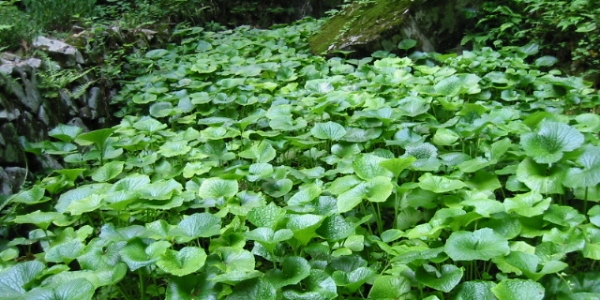
(2) Jizawa method (Upper Abe River region, Shizuoka Prefecture; Okutama region, Tokyo Prefecture)
This is the oldest cultivation method, in which gravel is spread over the wasabi field, which has a gentler slope than the mountain stream method. This method makes full use of the scarce spring water, but growth is uneven.
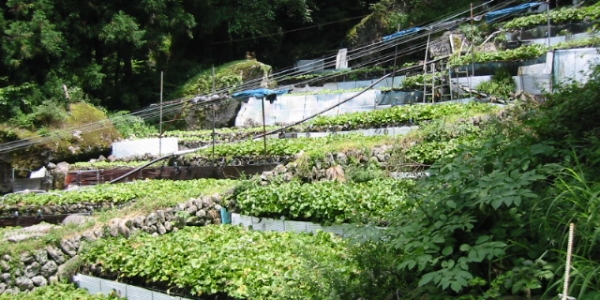
(3) Tatami stone method (Mt. Amagi region, Izu Peninsula, Shizuoka Prefecture)
This is a method of terraced cultivation on a slope, with a gentle gradient that makes management work more efficient. Although it requires an abundant amount of water, it is the most advanced style because of its good air permeability and rapid growth.
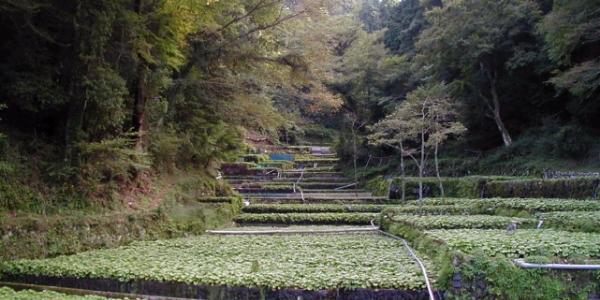
(4) Flatland method (Minami Azumi region, Nagano Prefecture)
The flat land is dug down 1 to 2 m along a river, and the beds are planted between rice paddies to take advantage of the underground water that flows under the riverbed or riverbeds. In high summer temperatures, it is susceptible to damage from flooding, so it is cultivated under a cold gauze covering.
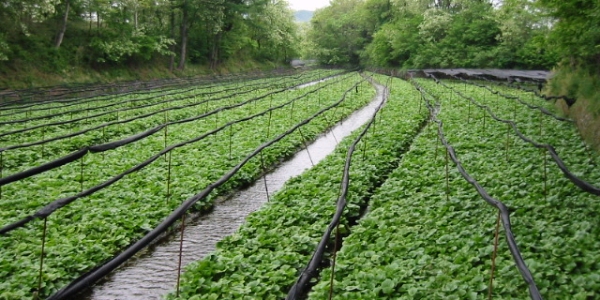
Cultivation of Hon Wasabi “in the field”
Field wasabi is grown in mountain fields, not under water. In particular, those grown in forests and other areas are called “forest wasabi. Although wasabi grows best in spring water with little temperature variation throughout the year, field cultivation also requires soil that does not retain moisture and a location that is cool in summer and warm in winter. Because it prefers cool temperatures and moderate humidity, the cultivation area has been used for mulberry, plum, and persimmon orchards, and other trees that provide shade. More recently, cedar and yellow cedar forests are increasingly being used.
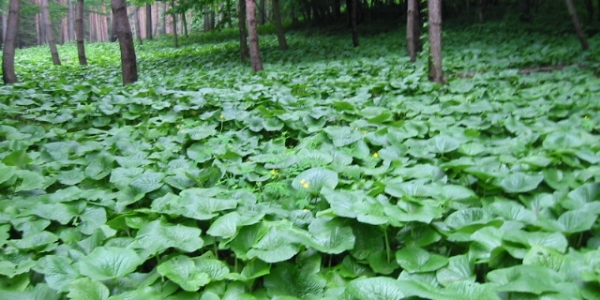
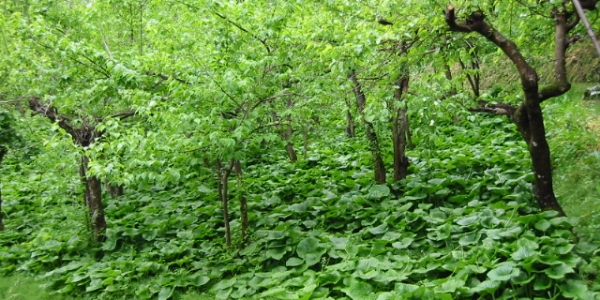
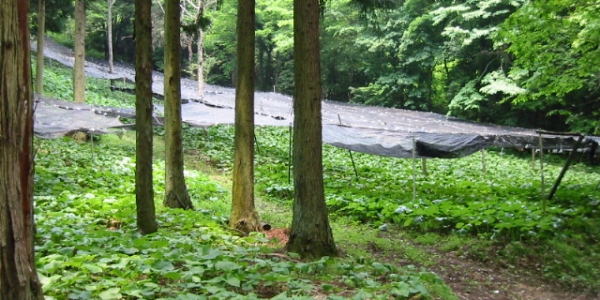
Cultivation of Western Wasabi
Western wasabi was introduced to Hokkaido from Europe and the United States at the beginning of the Meiji period (1868-1912) and spread throughout Japan, but never became popular as a common vegetable. However, it was recognized as a naturalized plant because of its strong reproductive potential and because it became wild in Japan. Western horseradish is difficult to produce seeds and propagates by its roots. Because of its resistance to cold, Hokkaido, which has a climate similar to that of its native Europe, is suitable for its cultivation, and most domestic products are grown in Hokkaido.
